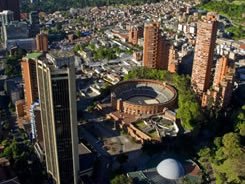
FDI in Colombia improved 9 times in 10 years: UNECLAC
UNECLAC figures note that Colombia’s FDI has increased nine-fold in the last ten years, although it barely amounted to $1.72 billion USD in 2003. According to the Ministry of Trade, Industry and Tourism, Colombia strengthened its foreign direct investments in the last few years thanks to its qualified personnel and improvements in safety and infrastructure and key factors that enable foreign companies to successfully start operations in Colombia.
“Some of the reasons why Colombia is an attractive destination for investors include the continuous improvement of the Gross Domestic Product (GDP), the yearly growth of available human resources, legal certainty and competitive advantages to export products, and tax-free services towards more than 50 different markets,” stated Maria Claudia Lacouture, President of PROCOLOMBIA Colombia.
As for their share in the national economy, oil, mining and quarry activities remain in the lead with 46.7% ($7.82 billion USD); followed by the manufacturing industry with 15.9% ($2.65 billion USD); transportation, storage, and communications with 10.4% ($1.74 billion USD); trade, restaurants, and hotels with 9.4% ($1.58 billion USD); and financial and entrepreneurial services with 9.4% ($1.57 billion USD).
“While the mining and energy sectors still play a key role, it should be noted that manufacturing and services have experienced a significant upward trend”, added Lacouture.
Regional Outlook
According to the UNECLAC, global FDI in 2013 increased by 11% and reached nearly $1.46 trillion USD. In Latin America and the Caribbean, the total was $184.92 billion USD, that is, 5% more than the previous year.
Within these figures, Brazil, Mexico, Chile, and Colombia are the main FDI beneficiaries in Latin America. In the last 10 years, the two main factors contributing to the growth of FDI are the region’s economic development and a high global demand for commodities. This includes private consumer goods, a key factor for FDI in search of new markets, which increased by 3.4%. Also, considering the uncertain recovery of first-world economies, transnationals keep finding investment opportunities in the Latin American and Caribbean markets, according to the UNECLAC.






